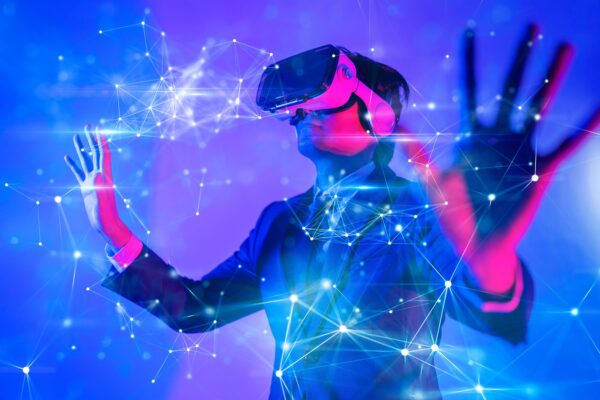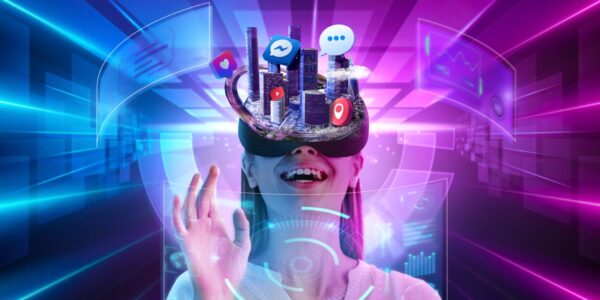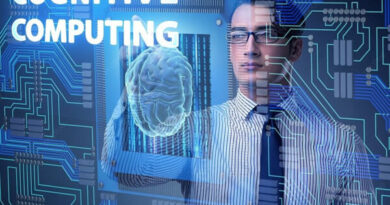Unveiling the Metaverse: The Dawn of a New Digital Era
The Metaverse represents a groundbreaking shift in our digital landscape, offering a new dimension where virtual and physical realities converge. It’s not just a speculative concept; it’s a tangible and evolving space that promises to reshape how we interact, work, and play. Imagine a world where your virtual avatar carries the same significance as your real-world identity and where immersive digital environments enhance your everyday experiences. Welcome to the Metaverse—a universe of endless possibilities.
Immersive Experiences Redefined:
In the Metaverse, the boundaries of reality are stretched. Unlike traditional online interactions confined to text and images, the Metaverse provides a fully immersive 3D experience. Through technologies like Virtual Reality (VR) and Augmented Reality (AR), users can engage in dynamic ways that feel almost tangible. Whether you’re attending a live concert with friends from around the world or collaborating on a project in a shared virtual office, the Metaverse blurs the lines between the physical and digital realms, creating a more interactive and engaging online experience.
The Digital Economy: New Frontiers:
Beyond its immersive experiences, the Metaverse is a burgeoning digital economy where virtual assets hold real-world value. Digital goods, services, and even virtual real estate are being bought and sold, transforming traditional notions of ownership and commerce. Non-Fungible Tokens (NFTs) have emerged as the new frontier in art and collectibles, providing a means to own and trade unique digital items. Meanwhile, digital currencies facilitate transactions across this expansive virtual landscape, highlighting the economic potential of the Metaverse.

Navigating the Challenges:
As with any transformative technology, the Metaverse introduces new challenges and considerations. Privacy and security are paramount concerns, as the digital spaces we inhabit become integral to our daily lives. Safeguarding digital identities and ensuring secure transactions are crucial for maintaining trust in these virtual environments. Additionally, the impact of the Metaverse on social interactions raises questions about the nature of relationships in a predominantly digital world. How will virtual experiences influence our offline lives, and what does it mean to forge genuine connections in this new space?
The Future of the Metaverse:
The journey into the Metaverse is still in its early stages, with its full potential yet to be realized. As this digital frontier expands, it will continue to evolve, offering new opportunities and challenges. The Metaverse is not just a fleeting trend; it represents a fundamental shift in how we engage with technology and each other. By embracing this new digital realm, we are not merely adapting to a new technology—we are redefining our interactions and experiences for the future.
In conclusion, the Metaverse stands as a testament to the limitless possibilities of digital innovation. As we navigate this new era, we are on the cusp of a profound transformation, where the boundaries between reality and the virtual world are seamlessly intertwined. The Metaverse is poised to redefine our digital lives in ways we are only beginning to explore.
FAQs:
What exactly is the Metaverse?
The Metaverse is an expansive digital realm where the boundaries between virtual and physical experiences are seamlessly integrated. It’s a collective virtual space where users, represented by avatars, can interact, create, and explore immersive 3D environments. This new digital frontier encompasses a variety of applications, from social interactions and entertainment to virtual workplaces and digital economies.
2. How does the Metaverse operate?
The Metaverse functions through advanced technologies such as Virtual Reality (VR) and Augmented Reality (AR). These technologies allow users to enter and interact with 3D digital spaces using specialized equipment like VR headsets or AR glasses. The Metaverse also employs blockchain technology for secure transactions and digital ownership, enhancing the experience with virtual currencies and NFTs.
3. What are NFTs, and how do they fit into the Metaverse?
Non-Fungible Tokens (NFTs) are distinctive digital assets authenticated and verified through blockchain technology, ensuring their uniqueness and ownership.In the Metaverse, NFTs are crucial for representing and trading exclusive virtual items, such as digital art, collectibles, and virtual properties. They enable users to buy, sell, and showcase one-of-a-kind digital assets within this expansive virtual environment.
4. What advantages does the Metaverse offer?
The Metaverse provides a range of benefits, including:
- Immersive Social Experiences: Connect with people from around the world in a richly interactive virtual space.
- Creative Freedom: Design and personalize virtual worlds, avatars, and digital assets.
- Innovative Work Environments: Collaborate in immersive virtual workspaces.
- Unique Entertainment Options: Access novel experiences and events within the digital realm.
5. What challenges or risks come with the Metaverse?
Engaging with the Metaverse introduces several challenges:
- Privacy Issues: Ensuring the protection of personal information and digital identities.
- Security Threats: Addressing potential cyber threats and fraud within virtual spaces.
- Accessibility Concerns: Bridging the gap to provide equitable access to Metaverse technologies.
- Social Dynamics: Understanding the impact on real-world relationships and interactions.
6. How can businesses leverage the Metaverse?
Businesses can harness the Metaverse in several impactful ways:
- Virtual Retail: Establish immersive online stores to enhance the shopping experience.
- Engaging Marketing: Utilize interactive and creative advertising strategies.
- Remote Collaboration: Implement virtual offices and team environments for effective remote work.
- Digital Revenue Streams: Tap into new markets through virtual goods and services.
7. What does the future hold for the Metaverse?
The Metaverse is poised for significant evolution with advancements in VR/AR technology, enhanced virtual experiences, and a more integrated digital economy. Future developments may include greater AI integration, expanded applications in education and health, and more personalized user experiences as the Metaverse continues to grow.
8. How can I begin exploring the Metaverse?
To dive into the Metaverse:
- Select a Platform: Choose from popular Metaverse environments like Decentraland, The Sandbox, or VRChat.
- Acquire the Right Gear: Invest in VR or AR equipment for an immersive experience.
- Create Your Avatar: Personalize your digital representation for interaction within the Metaverse.
- Explore and Participate: Engage with virtual communities, attend events, and discover opportunities in this new digital space.
9. What are some notable Metaverse platforms and applications?
Prominent Metaverse platforms include:
- Decentraland: A virtual environment for buying, building, and monetizing digital properties.
- The Sandbox: A gaming platform where users create and trade virtual experiences.
- VRChat: A social VR space for exploring diverse virtual worlds and interacting with others.
- Roblox: A platform for creating and enjoying games within a shared virtual space.
10. How does the Metaverse influence traditional industries?
The Metaverse is transforming traditional industries by introducing innovative ways to engage with customers, conduct business, and deliver services. It offers new marketing channels, redefines retail experiences, and enables novel approaches to remote work and collaboration. As the Metaverse expands, its impact on various sectors is likely to grow, driving substantial changes in industry practices.




